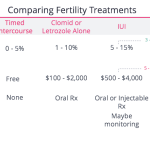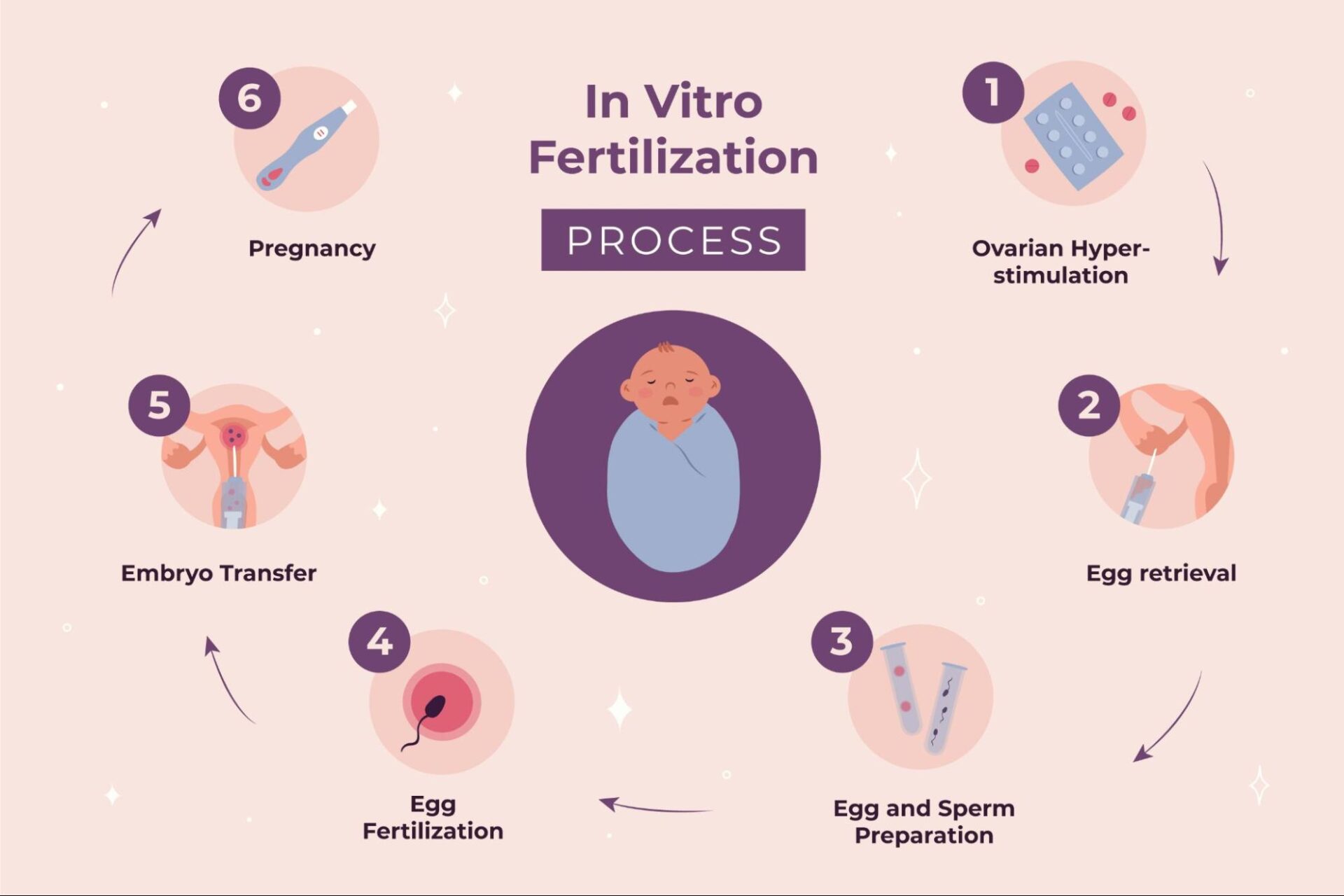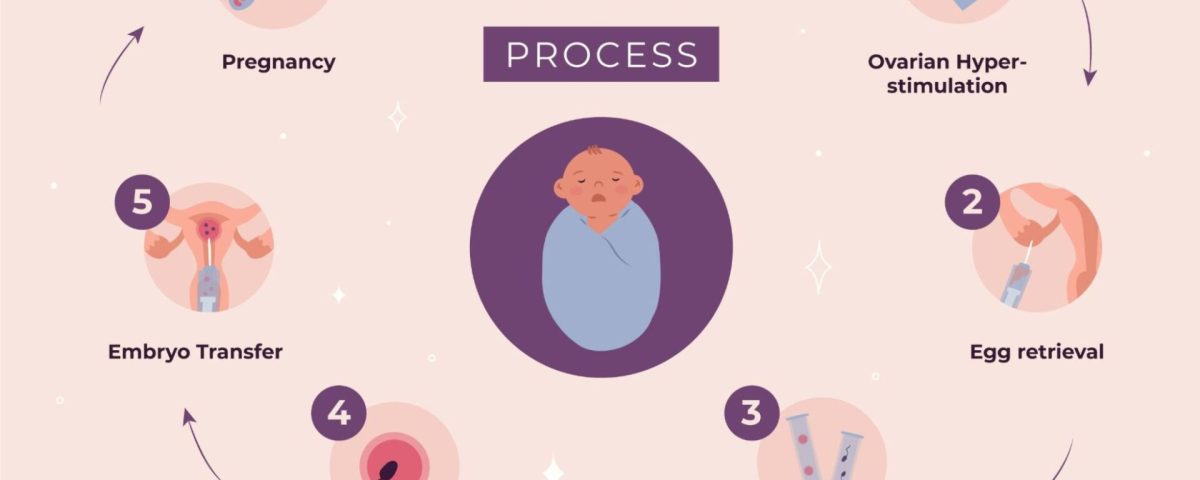
What Are IVF Shots? Your Complete Guide to Understanding Fertility Injections
April 29, 2025
How Much Does One Round of IVF Cost? Your Complete Guide to Understanding the Price Tag
April 29, 2025How Much Is Reciprocal IVF? Your Complete Guide to Costs, Process, and What to Expect
Reciprocal IVF is a beautiful journey for many couples, especially those in same-sex relationships or facing specific fertility challenges. It’s a process that blends love, science, and a bit of financial planning. If you’re wondering about the cost of reciprocal IVF, you’re not alone—it’s one of the biggest questions people have when exploring this path to parenthood. The price tag can feel overwhelming, but understanding what’s included, what affects the cost, and how to make it work for you can turn a daunting number into a manageable plan.
In this guide, we’ll break down everything you need to know about reciprocal IVF costs in 2025. From the basics of what it is to hidden expenses, insurance quirks, and even some fresh research, we’ve got you covered. Plus, we’ll share practical tips and real-world insights to help you navigate this adventure with confidence. Let’s dive in!
What Is Reciprocal IVF, Anyway?
Reciprocal IVF, sometimes called “shared motherhood” or “co-IVF,” is a fertility treatment where one partner provides the eggs, and the other carries the pregnancy. It’s a unique option that lets both partners play a biological role in creating their baby—one contributes the genetic material, and the other nurtures the baby in the womb. Pretty cool, right?
The process starts with the egg donor partner going through ovarian stimulation and egg retrieval. Those eggs are then fertilized with donor sperm in a lab (hello, science!). After that, the resulting embryos are transferred to the partner who will carry the pregnancy. It’s like a tag-team effort to build a family.
This method has gained popularity in recent years, especially among lesbian couples who want a shared biological connection to their child. But it’s not just about biology—it’s about the emotional bond, too. Imagine one partner saying, “I gave the egg,” and the other replying, “And I grew our little miracle.” It’s a teamwork story that’s hard to beat.
The Big Question: How Much Does Reciprocal IVF Cost in 2025?
Let’s get to the heart of it: the cost. In the United States, reciprocal IVF isn’t cheap, but the price varies depending on where you live, the clinic you choose, and the specifics of your treatment. Based on the latest data and trends in 2025, here’s what you can expect.
The Baseline Price Tag
A single cycle of reciprocal IVF typically ranges from $20,000 to $30,000. That’s the starting point before you add in extras like medications, donor sperm, or additional procedures. Why so pricey? You’re essentially combining two IVF processes: egg retrieval from one partner and embryo transfer to the other. Double the steps, double the resources.
Here’s a quick breakdown of what’s included in that base cost:
- Ovarian stimulation and monitoring: Hormones to boost egg production and ultrasounds to check progress.
- Egg retrieval: A minor surgical procedure to collect the eggs.
- Fertilization: Lab work to create embryos using donor sperm.
- Embryo transfer: Placing the embryo into the carrying partner’s uterus.
What Drives the Cost Up?
That $20,000–$30,000 range is just the beginning. Several factors can push the total higher:
- Medications: Fertility drugs can cost $3,000 to $7,000 per cycle, depending on how much you need and your response to them.
- Donor sperm: A vial from a sperm bank runs $800 to $1,500, and you might need more than one.
- Genetic testing: Preimplantation genetic testing (PGT) to screen embryos adds $3,000 to $6,000.
- Freezing embryos: Storing extras for later use? That’s about $500 to $1,000 upfront, plus $300–$600 annually.
- Clinic location: Big cities like New York or San Francisco often charge more than smaller towns.
So, if you add all the bells and whistles, a fully loaded reciprocal IVF cycle could climb to $35,000 or even $40,000. Yikes, right? But don’t panic—there are ways to manage this, and we’ll get to those soon.
A Real-World Example
Take Sarah and Jamie, a couple from Seattle. Sarah donated her eggs, and Jamie carried their baby. Their clinic quoted $24,000 for the base cycle. Medications added $4,500, donor sperm was $1,200, and they opted for PGT at $4,000. Total? $33,700. It’s a big number, but they planned ahead, and it was worth every penny when they held their daughter.
Why Does Reciprocal IVF Cost More Than Regular IVF?
You might be wondering, “Why does this cost more than standard IVF?” Great question! Regular IVF, where one person provides the eggs and carries the pregnancy, averages $12,000 to $15,000 per cycle (plus meds). Reciprocal IVF is pricier because it involves two people in the medical process.
- Double the monitoring: One partner needs ultrasounds and blood tests for egg retrieval, while the other needs prep for embryo transfer.
- Extra coordination: The clinic syncs two cycles, which takes more time and expertise.
- Two bodies, two treatments: Hormones for egg production and uterine prep mean more meds and lab work.
Think of it like cooking a meal for two instead of one—you need more ingredients and effort, so the bill goes up. A 2024 study from the American Society for Reproductive Medicine (ASRM) found reciprocal IVF costs about 30–40% more than traditional IVF due to these added steps.
Hidden Costs You Might Not Expect
Beyond the obvious expenses, some sneaky costs can catch you off guard. These aren’t always front-and-center in clinic quotes, so let’s shine a light on them.
Travel and Time Off
If your clinic isn’t local, you might need to travel for appointments. Gas, flights, or hotel stays add up fast. Plus, both partners might need time off work for procedures and recovery—egg retrieval alone requires a day or two of rest.
Emotional Support
Fertility journeys can be an emotional rollercoaster. Therapy or support groups (virtual or in-person) might cost $50–$150 per session. It’s not mandatory, but many couples say it’s a game-changer.
Failed Cycles
Here’s a tough truth: IVF doesn’t always work the first time. Success rates for reciprocal IVF hover around 40–50% per cycle for women under 35, per the CDC’s 2024 fertility report. If you need a second or third try, that’s another $20,000+ each time.
Post-Birth Expenses
Once your baby arrives, hospital delivery costs kick in—$13,000 to $22,000 in the U.S., depending on vaginal birth or C-section. It’s not part of IVF, but it’s part of the big picture.
Interactive Quiz: What’s Your Reciprocal IVF Budget?
Curious how these costs might stack up for you? Take this quick quiz to get a ballpark idea! Answer yes or no, and tally your points.
- Will you need donor sperm? (Yes = 2 points, No = 0)
- Are you planning genetic testing? (Yes = 3 points, No = 0)
- Do you live far from a fertility clinic? (Yes = 1 point, No = 0)
- Might you need more than one cycle? (Yes = 4 points, No = 0)
- Are medications likely to be high-dose (e.g., over 35 or PCOS)? (Yes = 2 points, No = 0)
Score:
- 0–3 points: ~$20,000–$25,000
- 4–7 points: ~$25,000–$35,000
- 8+ points: ~$35,000–$45,000+
This is just a rough guide, but it’s a fun way to start thinking about your plan!
Insurance and Reciprocal IVF: Does It Help?
Insurance is a wild card. In the U.S., coverage for IVF varies by state and plan. As of 2025, 21 states mandate some fertility coverage, but reciprocal IVF often falls into a gray area.
- Good news: States like New York, California, and Illinois cover parts of IVF, including meds or procedures. Some plans might cover egg retrieval or transfer, cutting costs by $5,000–$10,000.
- Bad news: Many policies don’t recognize reciprocal IVF as “medically necessary” for same-sex couples, even if it’s covered for infertility. It’s a frustrating loophole.
Call your insurance provider and ask:
✔️ “Does my plan cover IVF for same-sex couples?”
✔️ “Are donor sperm or genetic testing included?”
✔️ “What’s my out-of-pocket max?”
Pro tip: Look into employer benefits. Companies like Google and Starbucks offer fertility stipends—sometimes up to $20,000—that can cover reciprocal IVF.
Fresh Insights: What’s New in 2025?
Reciprocal IVF isn’t static—new trends and research are shaking things up. Here’s what’s fresh in 2025 that you won’t find in older articles.
Public Funding Programs
Some regions are stepping up. British Columbia, Canada, launched a publicly funded IVF program in 2025, offering up to $19,000 for one cycle. It’s not widespread in the U.S. yet, but states like Massachusetts are piloting similar grants. Could this be a game-changer for you?
At-Home Monitoring Tech
New devices let you track hormone levels or follicle growth from home, cutting clinic visits (and costs) by 10–15%, per a 2024 Fertility and Sterility study. Think of it like a Fitbit for fertility—convenient and wallet-friendly.
Success Rate Boosts
A 2025 ASRM report highlights improved embryo selection techniques, pushing success rates for reciprocal IVF to 55% for women under 35. Better odds mean fewer cycles, saving you money long-term.
How to Save Money on Reciprocal IVF
Sticker shock is real, but you don’t have to break the bank. Here are practical ways to cut costs without cutting corners.
Shop Around
Clinics vary wildly in price. A top-tier spot in Los Angeles might charge $28,000, while a smaller clinic in Texas offers the same for $22,000. Get quotes from 3–5 places and ask about package deals.
Financing Options
- Loans: Fertility-specific loans from companies like Future Family offer rates as low as 6–8% APR.
- Grants: Organizations like Baby Quest Foundation provide $2,000–$16,000 for IVF, including reciprocal cases.
- Payment plans: Many clinics let you pay in installments—say, $5,000 upfront and $1,000 monthly.
Tax Breaks
In the U.S., medical expenses over 7.5% of your adjusted gross income are tax-deductible. If you earn $60,000, that’s anything above $4,500. Keep receipts—IVF could save you $2,000–$5,000 on taxes.
Mini-IVF
A lighter version of IVF uses fewer meds and costs $10,000–$15,000. It’s less intense but still effective for younger, healthy patients. Ask your doctor if it’s an option.
Poll: What’s Your Biggest Cost Concern?
We’d love to hear from you! Vote below to share your top worry about reciprocal IVF costs. Results will help us tailor future content just for you.
- A) The base cycle price
- B) Medications
- C) Donor sperm
- D) Multiple cycles
- E) Hidden extras (travel, etc.)
Drop your pick in the comments or imagine clicking a button—your voice matters!
Unique Angle: The Emotional Cost-Benefit Analysis
Most articles focus on dollars, but what about the emotional side? Reciprocal IVF isn’t just a transaction—it’s a shared dream. A 2024 survey by Resolve: The National Infertility Association found 78% of couples felt closer after reciprocal IVF, even with the financial strain.
Take Mia and Taylor. Mia said, “Paying $30,000 was tough, but seeing Taylor pregnant with my egg? Priceless.” The cost stings, but the payoff—two parents biologically tied to their child—can outweigh it. It’s not in every article, but it’s a huge part of the decision.
Comparing Reciprocal IVF to Other Options
Wondering how it stacks up? Here’s a quick table to compare reciprocal IVF with alternatives.
| Option | Cost | Pros | Cons |
|---|---|---|---|
| Reciprocal IVF | $20,000–$40,000 | Shared biological role | High cost, complex process |
| Traditional IVF | $12,000–$20,000 | Simpler, one patient | Only one partner involved |
| IUI (Intrauterine Insemination) | $300–$1,000 | Affordable, less invasive | Lower success rate (~15–20%) |
| Adoption | $20,000–$50,000 | No medical risks | No biological connection |
Reciprocal IVF shines for couples wanting that dual connection, but cheaper options like IUI might work if cost is king.
Step-by-Step: Planning Your Reciprocal IVF Budget
Ready to make this real? Follow these steps to build a budget that fits your life.
- Research clinics: Call or email for detailed quotes. Ask about discounts or multi-cycle deals.
- Check insurance: Confirm coverage and max out benefits.
- Estimate extras: Factor in meds, sperm, and travel based on your needs.
- Explore funding: Apply for grants or loans early—some take weeks to process.
- Set a savings goal: Divide the total by months left (e.g., $30,000 ÷ 12 = $2,500/month).
- Build a buffer: Add 10–20% for surprises like a failed cycle.
Example: If your goal is $25,000 in a year, save $2,083 monthly. Tight budget? Extend to 18 months at $1,389.
Checklist: Are You Ready for Reciprocal IVF Costs?
Before you jump in, run through this checklist to see if you’re prepped:
✔️ Have you compared clinic prices?
✔️ Do you know your insurance coverage?
✔️ Have you budgeted for meds and sperm?
✔️ Are you okay with possible multiple cycles?
✔️ Have you looked into grants or loans?
❌ Skipping these? Pause and plan—it’ll save you stress later.

The Global Picture: Costs Beyond the U.S.
Curious about international options? Reciprocal IVF costs less in some countries, thanks to lower medical fees or public funding.
- Spain: $10,000–$15,000. A hotspot for fertility tourism with top clinics.
- Canada: $15,000–$20,000, or less with programs like B.C.’s $19,000 grant.
- Mexico: $8,000–$12,000. Affordable, but check clinic quality.
Travel adds $1,000–$5,000, so weigh convenience vs. savings. A couple from Texas saved $10,000 by going to Mexico City—worth it for them, but research is key.
Final Thoughts: Is Reciprocal IVF Worth the Cost?
The price of reciprocal IVF can feel like a mountain, but it’s more like a staircase—tough to climb, but doable with the right steps. For many, the chance to share parenthood in such a unique way makes every dollar worth it. With smart planning, new tech, and a little creativity, you can make it work.
What’s your next move? Maybe it’s calling a clinic, chatting with your partner, or crunching numbers over coffee. Whatever it is, you’ve got this—and we’re rooting for you every step of the way.




